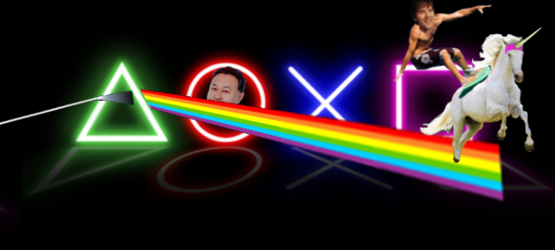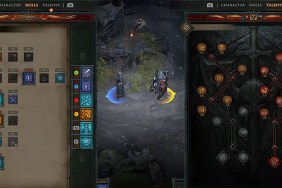As the week comes to a close, Daily Reaction wouldn’t be complete without discussing a baffling comment made by an exec. Today, Seb and Dan discuss whether the PS4 and Xbox One’s specs are “meaningless” in what will surely be a pointless argument.
Seb: So here’s what happened: Xbox product planning head Albert Penello told OXM that technical comparisons between Xbox One and PS4 are “meaningless” as their “games and experiences are going to be every bit as good as, if not better” than those on competing consoles.
The problem is that Sony decided to go out and publish a bunch of numbers, which are in some ways meaningless… because this isn’t like 1990, when it was 16-bit versus 32-bit.
As a matter of fact, they actually go out and they talk about how proud they are about their off-the-shelf parts. Our guys’ll say, ‘we touched every single component in the box and everything there is tweaked for optimum performance.’
For me, I’d rather not even have the conversation, because it’s not going to matter. The box is going to be awesome. The games are going to be awesome. I heard this exact same argument last generation and it’s a pointless argument, because people are debating things which they don’t know about.
Ugh. It’s like Microsoft enjoys slowly loading a gun, pointing it at their foot and firing. Of course specs are important, of course comparisons are important, and of course the games are important. We could end the Daily Reaction right here, it’s that obvious, but let’s get into the nitty gritty.
We should probably get the comparison out of the way first, because people do actually know what they’re talking about – they do know that the PS4’s RAM is faster, and that the GPU is better. That’s the real reason why Microsoft is making this statement, but it’s just silly.
Here’s why specs are important: certain games do need a lot of power to actually be possible, while others just look prettier (which is fine), and it makes things simpler for developers. Great games can exist on any platform, but strong specs make the potential to have these quality titles all the higher.
Yesterday, Mark Cerny talked about the PS4’s creation and one of his focus points was “time-to-triangle”, the time it takes a developer to create the base for a game that matches the hardware’s graphical power. The PS1’s time-to-triangle was 1-2 months, the PS2 was 3-6 and the difficult-to-develop-for PS3 took 6-12.
The problems with the PS3 crippled its developer support, caused third parties to hate making games for it, titles to be visibly worse and costs to spiral. Worse, it constrained innovation.
The PS4’s time-to-triangle is, apparently, 1-2 months. Not only will that be great for dev costs, it will allow for experimentation with gameplay ideas at a far earlier stage, meaning that innovation can be a lot cheaper, and risks will be a lot less. This is important to the industry, and how it evolves. Talking about specs and games is not a mutually exclusive topic, one helps lead to the other.
Saying specs are meaningless is downright stupid, and, if they really are, why the hell do we need new consoles?

Dan: Yeah, it is obvious that Microsoft are trying to downplay the numbers, simply because the numbers do not lie – so let’s see what they say:
- The Xbox One: (Memory) 8GB of 2133MHz of DDR3 (Memory Bus) 256bit (Memory Bandwidth) 68.3 GB/s
- The PS4: (Memory) 8GB of 5500MHz of GDDR5 (Memory Bus) 256bit (Memory Bandwidth) 176 GB/s
Simply by looking at these specs you can see that there is a major issue with the stats for the Xbox One, as the PS4 has over 2x the amount of Memory Bandwidth – which is the amount of information that can travel down the channels, giving more output
The one thing that most people seem to disregard is that Microsoft has included eSRAM (Embedded Static Random Access Memory) on the Xbox One as a means to potentially give it a boost. There will be 32mb of eSRAM which is capable of processing 102 GB/s, meaning that in the a best case scenario the XBO could overall be able to do 176 GB/s worth of processes. But, as the eSRAM is still only able to handle 32mb at any single instant, even while fast, it could still only be able to have 32mb of memory at a single instant compared to the PS4’s much heftier memory.
Now, there is still some controversy as to whether the eSRAM will be simply be used for cache or if it will in fact be able to be managed through software, so we will have to see if Microsoft really can close the gap Sony has on them.
Other issues that seem to be popping up for the eSRAM are numerous rumors of it having to be underclocked due to heating problems, something that would basically destroy the output of the XBO and that there are complications with the dye, meaning that, come launch, stock of the system could be limited (which could be why GameStop is limiting XBO pre-orders but not PS4 ones).
There you go, the numbers, now what do they mean? Well actually nothing, if programmers are not able to use them within reason, as was the problem with the PS3 during its early years. Now, Sony and Microsoft have streamlined the process and used the x86 architecture, a common structure for PC developers, meaning that the ‘time-to-triangle’ will almost be nothing. Which also means, that as the years go on, developers will have a significant amount of time to harness every bit of power from each console and that any lead one has over the other will be a defining factor for the later end of next-gen.
So yes Microsoft, numbers alone don’t mean everything… but you are still planning to hit the market with an overpriced, underpowered console and those numbers do mean something.
Do specs matter to you? Do you want your console to be powerful and easy to develop for? Or do you not care as long as it plays your favorite IPs? Let us know in the comments below, tell us how big it is at DailyReaction@PlayStationLifeStyle.net and measure our rams at Seb and Dan.








